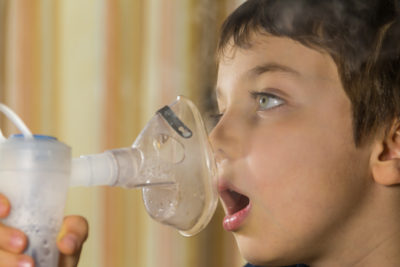Inhaled vaccine technology is not science fiction. However, the concept is surely not an everyday one. Thus, we thought the first month of the new year would be the perfect time for acquainting our FLASS blog readers with some unique research issues and discoveries.

Vaccines Offer New Benefits: Scientist Continue to Study Not Only Vaccines, But Delivery Systems to Insert Them Into the Body.
Much of the time our blogs focus on patient care. But we also keep abreast of the most cutting-edge research going on in health and medicine every day. Learning about the studies we see in medical research certainly piques our curiosity.
However, more than that, it enhances our optimism about the medical care of the future. And today’s topic of the inhaled vaccine encourages our appreciation. This includes not only what is happening to improve patient care but also what is happening for the future, in the research labs.
Did You Know You Could Inhale a Vaccine?
It is totally possible you are unaware of the technology of inhaled vaccines or medications. Unless you have a diagnosis of COPD or Asthma, you might only think of the most common delivery systems for medication. These include pills and injections.
Think again. Science can deliver very powerful medications and therapies through the respiratory system. Some of our youngest asthma patients carry rescue inhalers. And some of them call this advanced delivery system a “Wheezer.” Well, they certainly know their “wheezers” work very well to deliver medications to the body.
Recently Study into Inhaled Vaccine

We Know Viruses Spread By Aerosol Sprays. So, Can Medication. Therefore, Researchers are Studying Inhaled Delivery Systems For Vaccines.
Scientists have completed research on the inhaled vaccine with mice and non-human primates. Much to their delight, they have proven that the inhalation system “induces a fast, strong immune response in mice and non-human primates.” And moreover, it does so without causing lung damage.
They believe that they are creating “an advance technique which may lead to new therapeutics for respiratory diseases like COVID-19.”
Inhaled Vaccines: World Class Research
Another term for Inhaled therapies is “Pulmonary delivery.” And scientists greatly laud the benefits of pulmonary over the well-known delivery systems like pills or injections:
1. Direct Arrival: Inhaled vaccines go directly to the location of the infection.
2. About That Shot: Inhaled vaccines are “needle-free and minimally invasive, which is especially attractive for administrating multiple doses.”
3. Very Speedy Results: The Scientists are quick to point out inhaled vaccine “improves therapeutic bioavailability…” This is the direct result of number 1 (above). The immunity reaction kicks in faster than cases of needle-based vaccination. And it is certainly faster than taking a pill.
4. No Side Effects: Since we get the healing immunity faster, there are fewer side effects than with injections.
Now, Put these Four Benefits into Medical Language

Today’s Researchers Have Tomorrow’s Answers Under the Microscope.
The efficacy of the inhalation vaccination delivery system relies on anatomy. Co-senior study author Renata Pasqualini of Rutgers Cancer Institute of New Jersey states two reasons:
- In the first place, she says, “The very extensive and accessible layer of cell surfaces in the lungs is highly vascularized…” Thus, these accessible cell surfaces permit “rapid absorption of molecules throughout circulation in much higher concentrations…” This happens because we avoid “the drug-metabolizing enzymes of the gastrointestinal tract and liver.”
- In the second place, she states, “Because the lungs are constantly being exposed to pathogens from the air, they likely have a high level of immune defense activity.” Therefore, they “represent an efficient site for immune protection against airborne pathogens.”
Inhaled Vaccines: A Look to The Future

Research and Patient Care Are Joining Hands to Defeat the Current COVID-19 Crisis.
It is possible that this method of Lung delivery could protect against several airborne pathogens. And thus, we could protect more people faster against:
- Tuberculosis.
- Influenza.
- Ebola.
- Measles.
- And COVID-19.
Just think of how much such a system of delivery could help immunize populations in areas of the world that are medically underserved. It would certainly be faster than getting shots into arms.
Researchers admit there must be further study and development before such a lung delivery system could be widely used. We do not yet understand many “underlying physiological mechanisms.”
The Inner Mysteries of Inhaled Vaccines: A High Dive for Deep Readers
To learn how scientists are developing inhaled vaccines really requires some deep reading into the fascinating world of microbiology. Deep readers can find more information on inhaled vaccines at this reliable online resource.

The Inhaled Vaccine Delivery System Could Make a Huge Difference In the Health of a Distant or Underserved Cultures of the World.
The approach involves the use of “phages.” Phages are viruses that “can infect and replicate within bacterial cells.”
In some vaccines, it might surprise you to know that phage particles carry peptides. According to new studies, as you breathe them in, those peptides ignite powerful immune responses. At FLASS we will keep an eye on these medical research studies. We will closely monitor research in the area of inhaled vaccines as we watch the present transform into the future.

